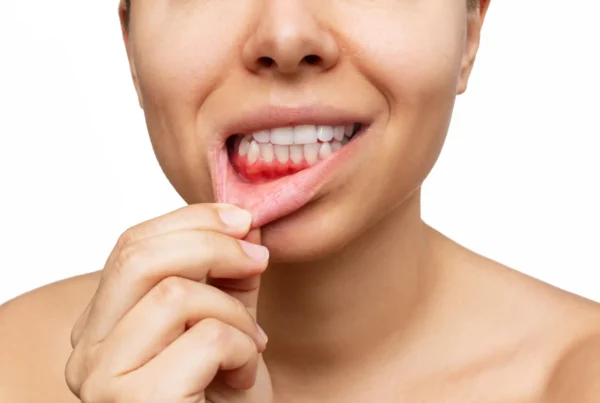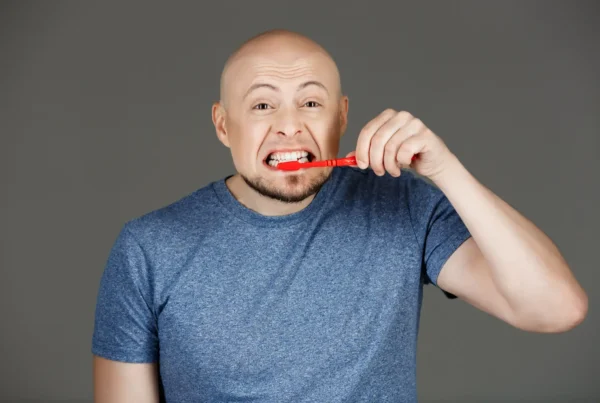- What is tooth decay and how does it form?
- Main causes of tooth decay
- Signs of tooth decay – how to recognize it?
- Stages of tooth decay and how it’s treated
- What happens if cavities are left untreated?
- Why treating tooth decay is so important
- Can tooth decay be prevented?
- Is decay treatable once it’s been filled?
- Is tooth decay just a problem for adults?
- How to protect children’s teeth from decay?
- Is tooth decay contagious?
- Is hydroxyapatite toothpaste effective against cavities?

According to statistics, up to 98% of people in Poland have experienced or are currently affected by tooth decay. As with many health conditions, prevention is better than cure. Left untreated, tooth decay can affect not only your mouth but also your overall health. In this article, you’ll learn what cavities are, what causes them, how to treat them, and how to protect your teeth long-term.
What is tooth decay and how does it form?
Tooth decay is a bacterial infection that affects dental plaque. It occurs due to demineralization of the tooth structure, typically when the teeth are exposed to acids for extended periods. These acids strip essential minerals such as calcium, magnesium, and phosphorus, weakening the enamel and increasing the risk of cavities.
Many people are unaware of how much untreated tooth decay can harm the body. That’s why preventive care is so crucial. But what causes tooth decay in the first place?
Main causes of tooth decay
- Genetics – some people are more susceptible than others
- Poor oral hygiene – irregular brushing, no flossing
- Weak enamel or dental conditions
- Infrequent dental visits
- High sugar consumption – sugar provides the perfect environment for bacteria
Signs of tooth decay – how to recognize it?
Tooth decay isn’t always easy to spot. Obvious signs include:
- Toothache or sensitivity
- Visible holes or dark spots
- Discomfort when chewing or eating hot, cold, or sweet foods
If you’re noticing these symptoms, it’s time to act before the decay progresses.
Read more: What does tooth decay look like in children?
Stages of tooth decay and how it’s treated
Tooth decay develops in stages:
Stage 1 – Demineralization:
The earliest stage is marked by white spots on enamel. This is reversible with improved oral hygiene, a good diet (rich in dairy), and regular use of a sonic toothbrush, floss, and mouthwash.
Stage 2 – Enamel decay:
Here, the enamel begins to break down. At this point, enamel can’t repair itself, so a dental filling is needed. You may also experience mild pain.
Stage 3 – Dentin decay:
The decay reaches the dentin layer, causing sharper pain. Composite fillings or onlays may be used. If the damage is too extensive, a crown may be necessary.
Stage 4 – Pulp infection:
When bacteria infect the tooth pulp, pus forms and the nerves are damaged. Root canal therapy is usually required to save the tooth.
Stage 5 – Root apex infection:
The infection reaches the root tip, forming an abscess. This advanced stage can cause facial swelling and pain. Treatment again involves a root canal, followed by restoration of the tooth crown.
What happens if cavities are left untreated?
Neglecting tooth decay can lead to:
- Depression
- Diabetes
- Periodontitis
- Heart disease
- Kidney disease
- Sinus or throat infections
- Joint pain
- Meningitis
- Gastric ulcers
- Chronic bad breath (halitosis)
Untreated decay may also spread through the bloodstream and cause systemic infections such as sepsis.
Why treating tooth decay is so important
Cavity treatment is essential to prevent the infection from spreading deeper into the tooth and body. Never ignore even the earliest signs of decay. The consequences can be serious.
Can tooth decay be prevented?
Yes – here’s how to prevent cavities:
- Brush at least twice a day for two minutes
- Use high-quality electric or sonic toothbrushes
- Floss daily and use mouthwash
- Use a water flosser for additional cleaning
- Limit sugary foods and drinks
- Maintain a balanced diet
- Visit the dentist twice a year for check-ups and cleanings
Is decay treatable once it’s been filled?
Even after treatment, decay can return—especially around fillings. This is known as secondary decay. That’s why it’s crucial to maintain proper oral hygiene even after your dentist fixes a cavity.
Is tooth decay just a problem for adults?
No – tooth decay affects both children and adults. In fact, 90% of adults in Poland have had cavities at some point. It can develop as soon as the first baby teeth appear.
How to protect children’s teeth from decay?
Childhood cavities are mostly due to poor or inconsistent brushing. Prevent it by:
- Brushing 2–3 minutes daily using soft-bristle, electric, or sonic brushes
- Using child-friendly toothpaste, floss, mouthwash, and even a water flosser
- Limiting sugary foods and drinks
Is tooth decay contagious?
Yes, it is. Bacteria like Streptococcus mutans and Lactobacillus acidophilus cause tooth decay and can spread through saliva and food residue.
Is hydroxyapatite toothpaste effective against cavities?
Yes. Hydroxyapatite is a safe and effective alternative to fluoride, especially in adult dental care. It helps rebuild enamel and is supported by recent clinical findings published in Frontiers in Public Health.






